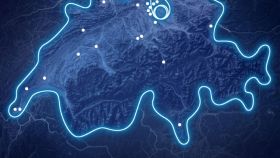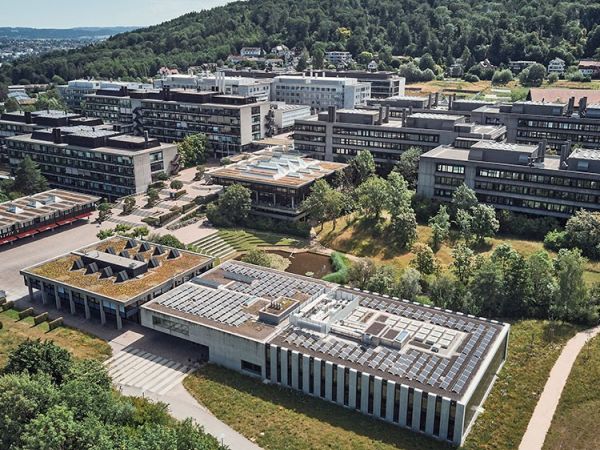
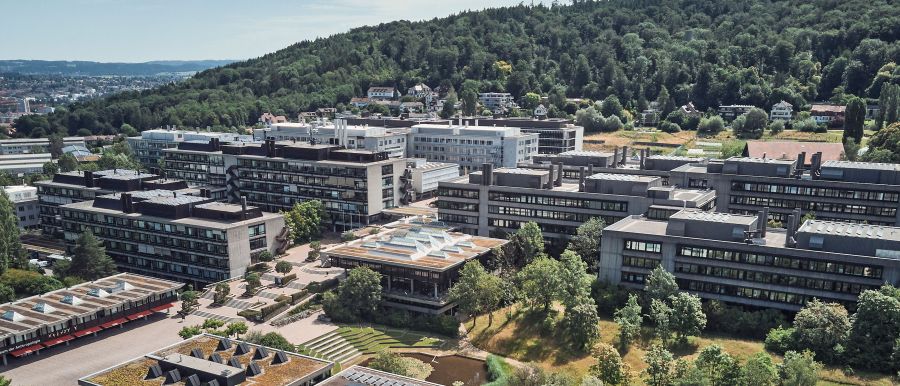
First, a few superlatives: The University of Zurich is the largest university in Switzerland. Irchel Campus is its largest site. It is located in the heart of Irchelpark, ‘the largest newer park in Switzerland,’ as the city of Zurich writes. On the way to the entrance, a frog jumps across our path – it’s also exceptionally large.
We enter and are soon in the Center for Theoretical Astrophysics and Cosmology. Every inch of a large blackboard is scrawled with mathematical formulas. In 1905, Albert Einstein submitted his dissertation to the University of Zurich. 115 years later, does science still work with chalk and duster? ‘It’s a myth that professors spend all day sitting at a computer,’ laughs Adrian Rast, ‘but when they have an idea and start their simulations, they need massive computing power.’
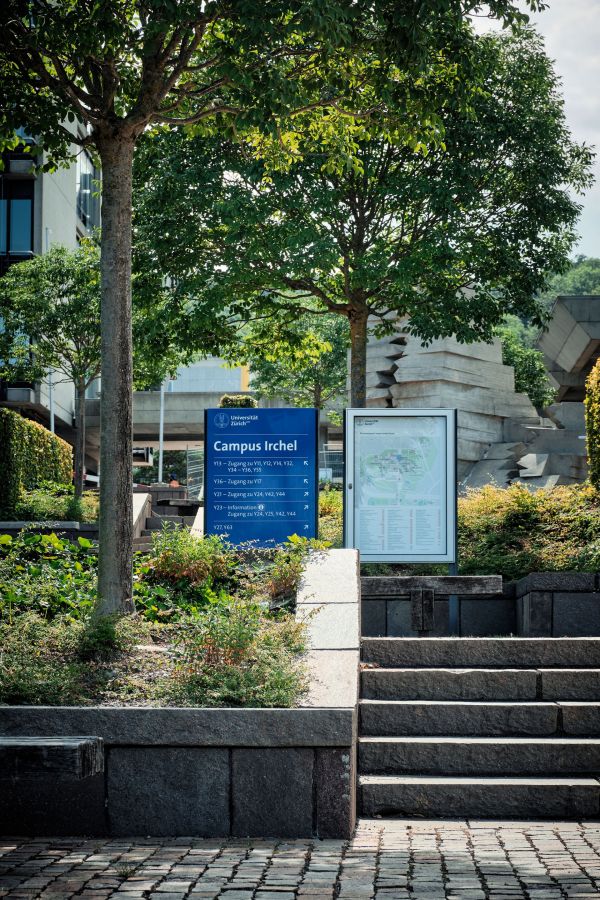
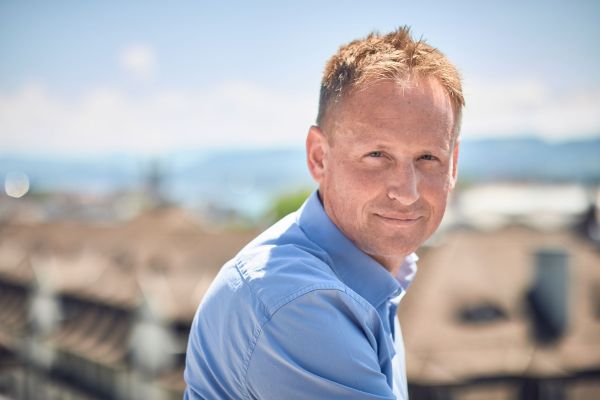
‘We want to have as much control over our lines as possible.’
Right next to this extraordinarily computing-intensive centre, there is a small, inconspicuous door. Rast opens it. Straight away it’s noisy. The head of IT infrastructure shouts, ‘welcome to the University of Zurich’s largest data centre!’ Its 400 square meters are filled with servers, storage systems and communications hardware, with even an internet exchange point located here. The noise comes from the fans, which cool the space to room temperature.
Adrian Rast takes us to the back of the room to a rack with coloured fibre-optic cables. ‘This is where the whole university connects,’ he explains. Next to each connector is a building name that indicates where the cable is going or where it comes from. ‘We have more than 200 locations,’ says Rast. ‘Each one is connected to the data centre, and the larger ones are even redundant (doubled), so we have a back-up route in the event of a fault.’
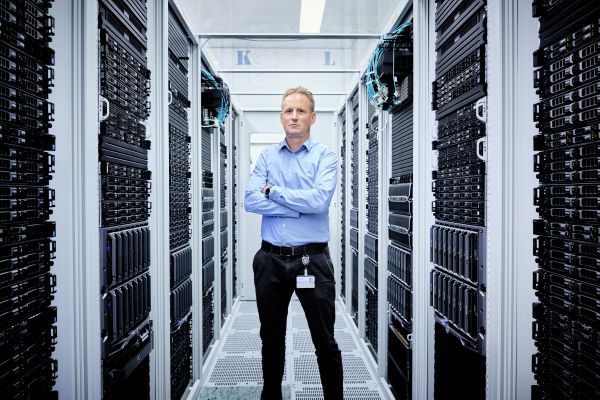
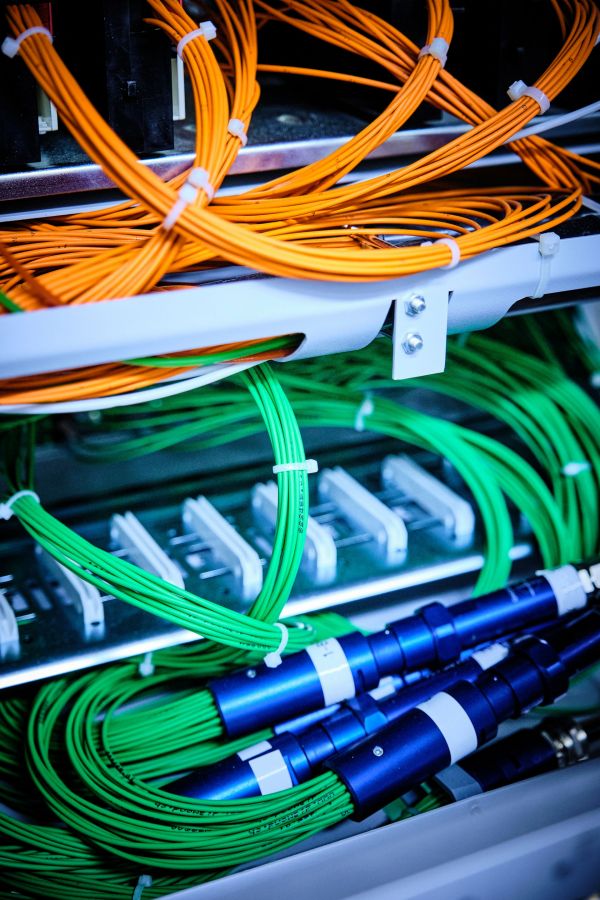
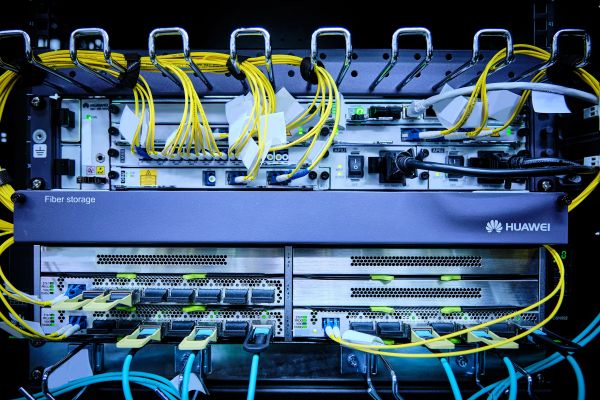
From the data centre, the lines run down through the floor. How do you connect all the buildings that are spread throughout, or in some cases even outside, the city? ‘It’s impossible to set up our own infrastructure,’ says Rast, ‘but we still want to have as much control over our lines as possible.’ The solution: ewz, which owns and operates the city’s largest fibre-optic network, provides the University of Zurich with dedicated fibres for exclusive use on a separate network for business customers.
These dark fibres form the foundation of the university network. They are called dark because ewz rents them ‘unlit’. Fibre optics transmits data as light, with lasers at both ends of the lines translating bits and bytes into pulses of light.
For other customers, ewz manages the data lines and encrypts them on request. The University of Zurich rents them ‘raw’, giving it full authority. ‘Amongst other things, we implemented our own security system,’ says Adrian Rast. ‘Fibre optics is the first line of communication. When this is encrypted, all communication is secure.’
Another advantage: the university has no limits in terms of data volume; it can multiply (multiplex) the connections at will. It also determines the data speed itself. ‘Unbelievably large volumes of data are transferred via the university network every day,’ says Rast.
dedicated fibre optics – i.e. used exclusively by you – offer maximum availability and a high degree of flexibility and autonomy for data transmission. This makes ewz.fiber the perfect solution for all companies that want to operate their own data networks.
ewz won a tender process lasting several years and prevailed against several fibre-optic network operators (carriers). The new contract has been in force since 1 January 2020. ‘The University of Zurich’s infrastructure solution is one of the largest that we make available to an end customer,’ says Roman Leiser, Head of Telecom Solutions Sales at ewz. ewz has been working for the University in telecommunications matters since 2003. ‘Thanks to our long-standing collaboration, we have a precise understanding of the needs of the University and are able to offer tailored solutions.’ Leiser describes the relationship as ‘professional and friendly – we know and think highly of each other’. ewz had already been working with the University before the current contract. According to Leiser, the company is a long-standing partner that is as agile as the University itself and its innovative ideas are always supported.

‘We are very satisfied with ewz,’ says Adrian Rast, Head of IT Infrastructure at the University. For him, there are three main points: ‘ewz is very flexible – we can usually connect a new building more quickly and, in the event of unforeseen circumstances, we always find a solution together.’ As a second argument, he mentions dealing with faults that occur very rarely on the ewz network (ewz fibre-optic cables are laid in the concrete blocks of ewz power lines at a depth of 60 to 120 centimetres and are therefore particularly well protected from outside influences). And if there are interruptions, the reaction time is quick and the approach is goal-oriented. The third point is price. ‘It is still too early for a precise analysis,’ says Rast, ‘but we expect to be able to cut costs in the double-digit percentage range. This is taxpayers’ money we’re talking about.’
Before the complete solution from ewz, the University had individual contracts with various providers – a disparate and confusing situation. Adrian Rast sums up the new environment like this: ‘Life has definitely become easier.’
We’re back at the blackboard. Since Albert Einstein submitted his dissertation, research has definitely changed: the 660 professors are in constant contact with other research institutions, the supercomputer in Lugano, their students and so on and so on. Interestingly, it’s no longer just scientists who generate large volumes of data, ‘but also linguists and political scientists,’ says Rast. ‘In addition, more than 25,000 students send data to and fro around the clock.’ There is only one solution for sending this vast amount of data: ‘The only option is fibre optics,’ says Adrian Rast.


